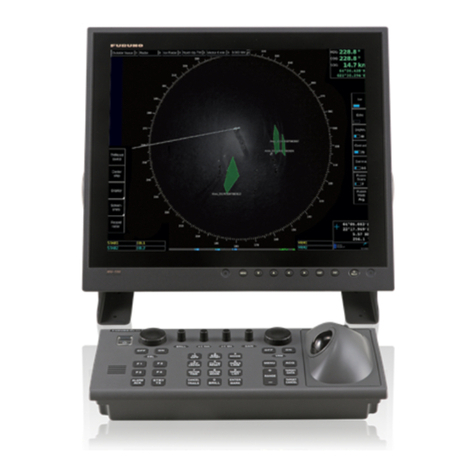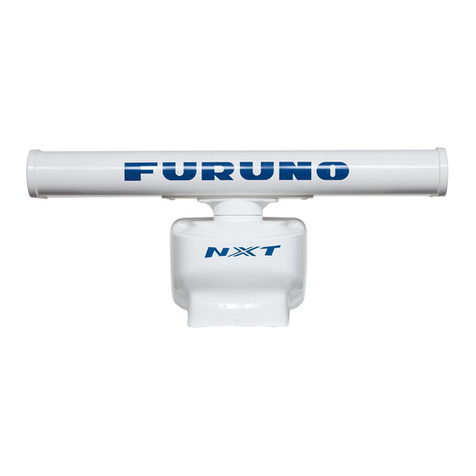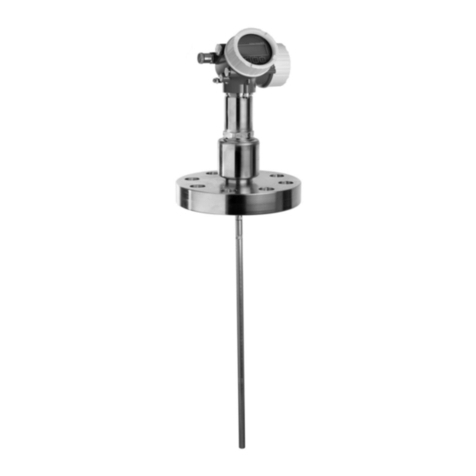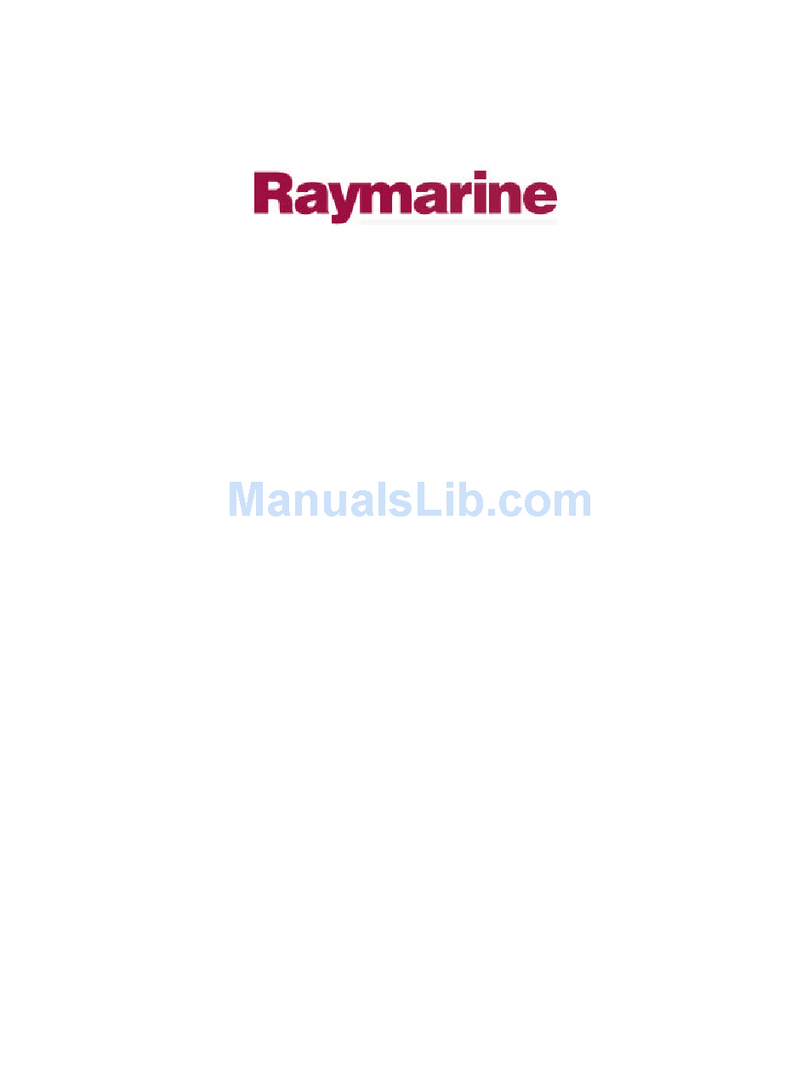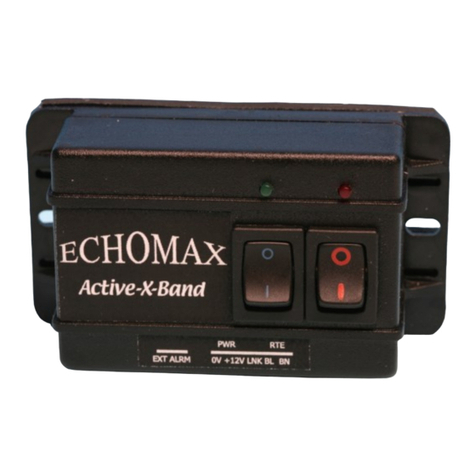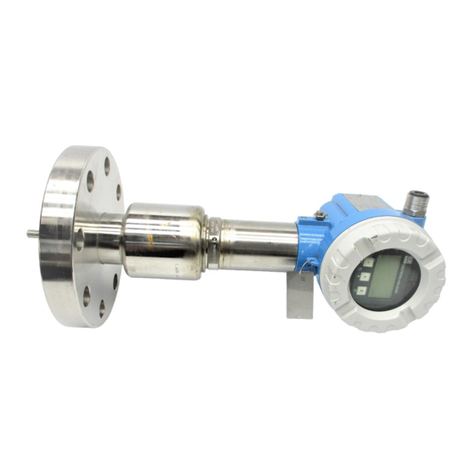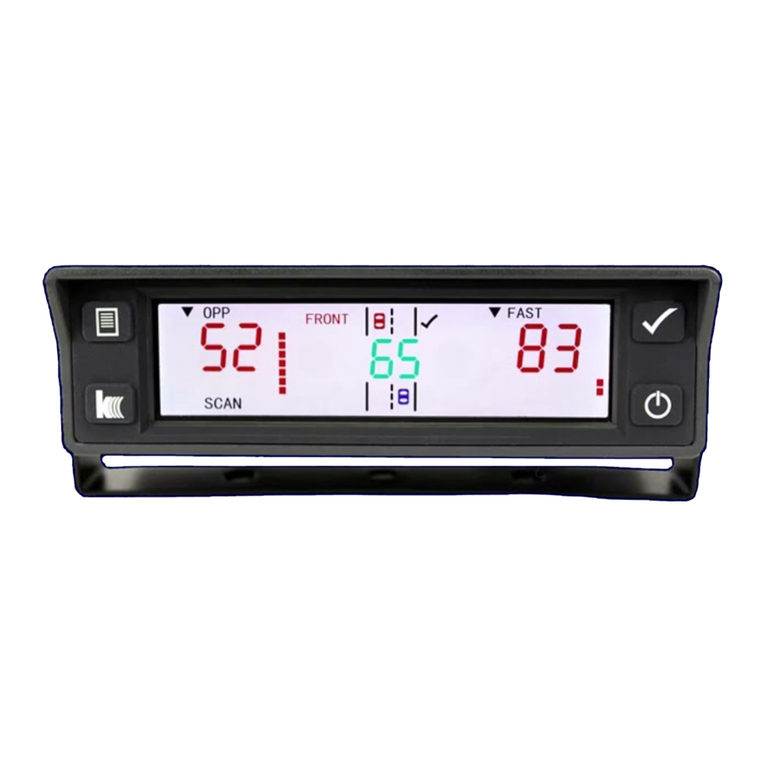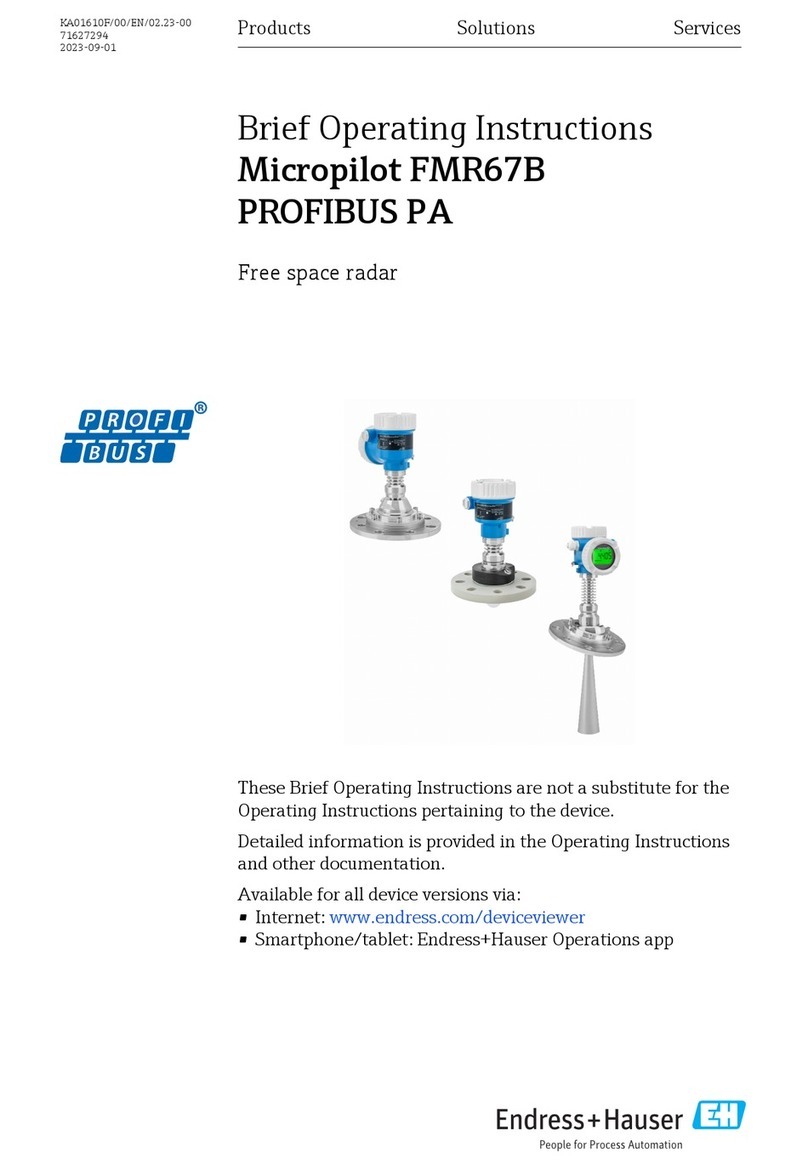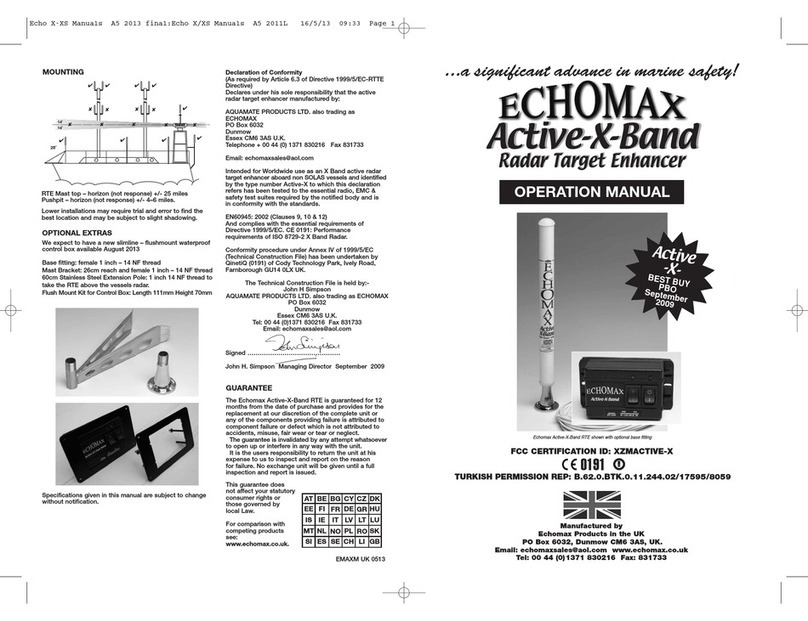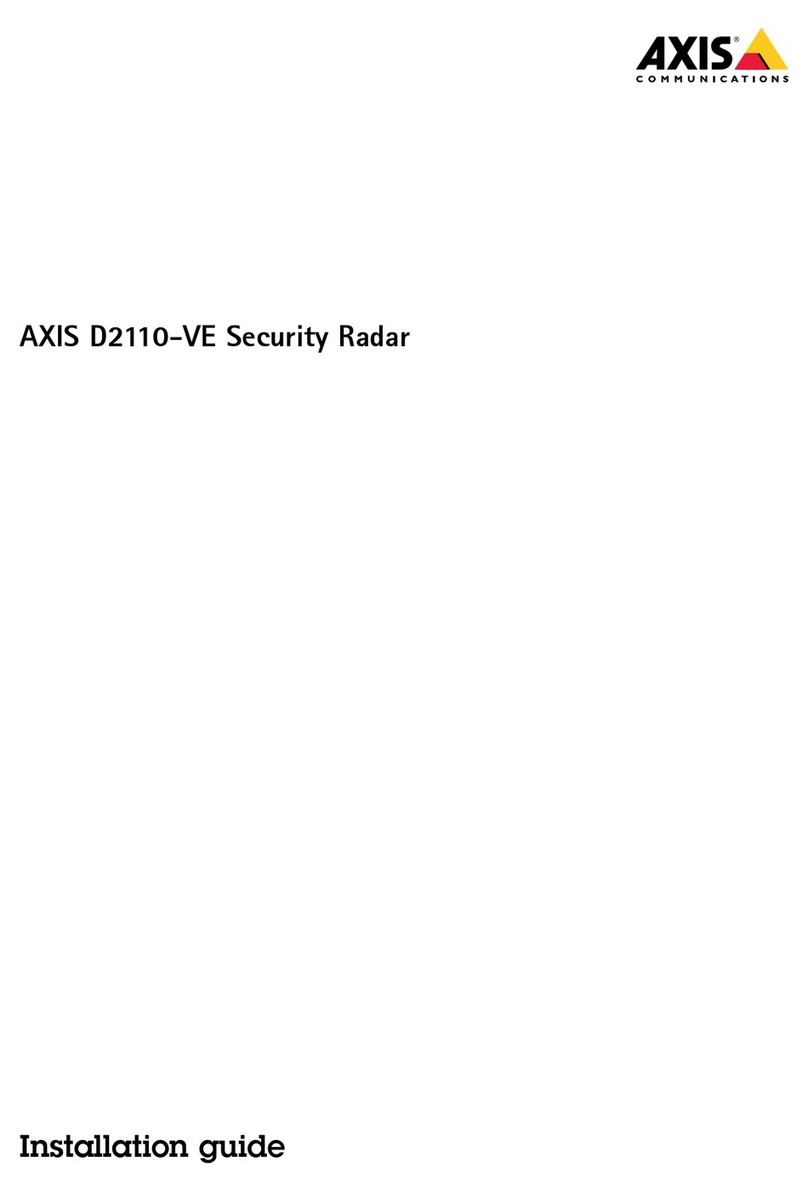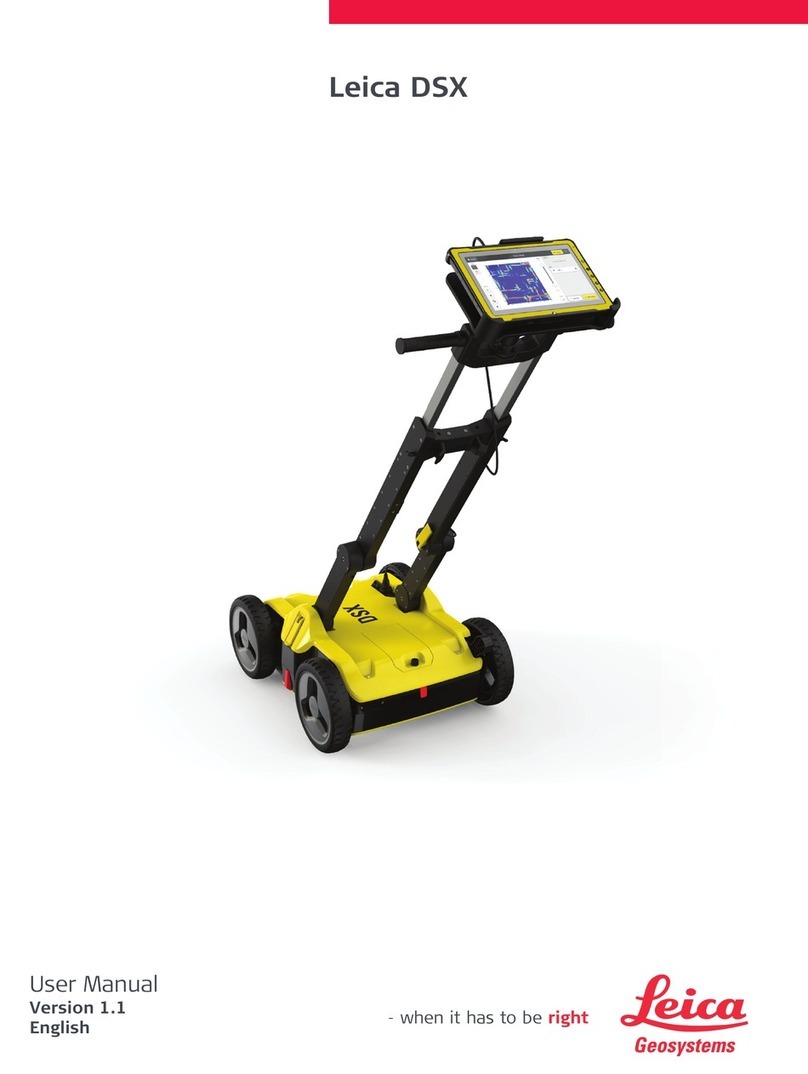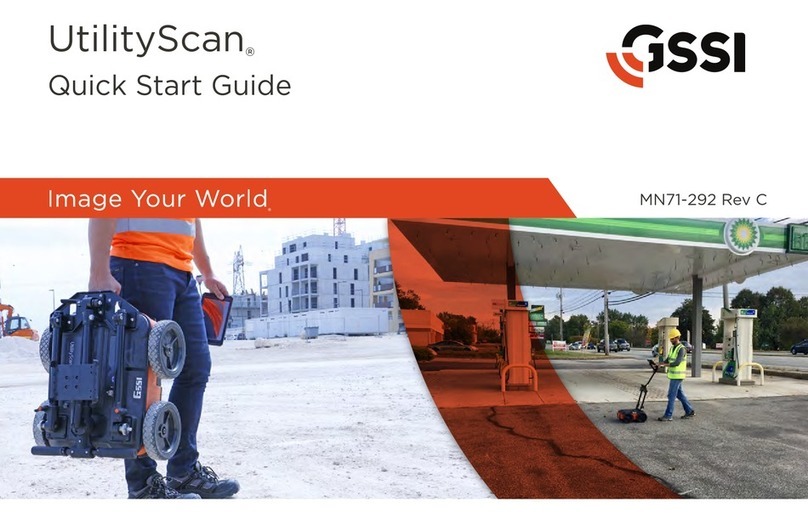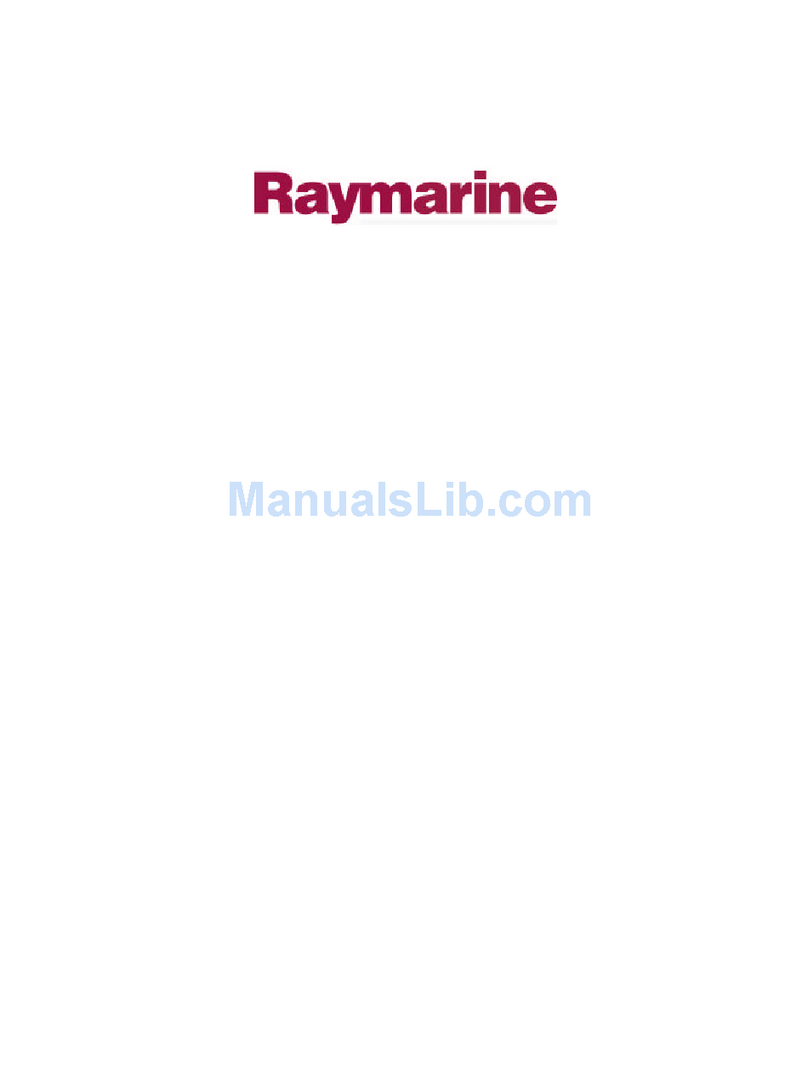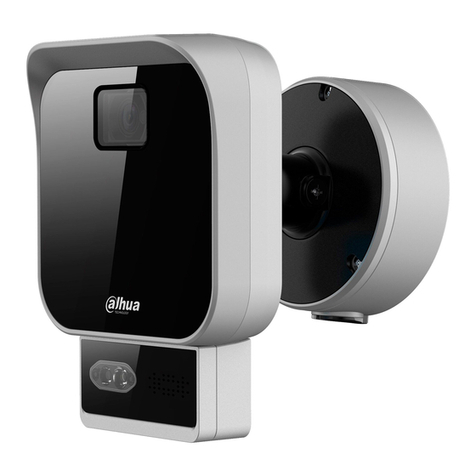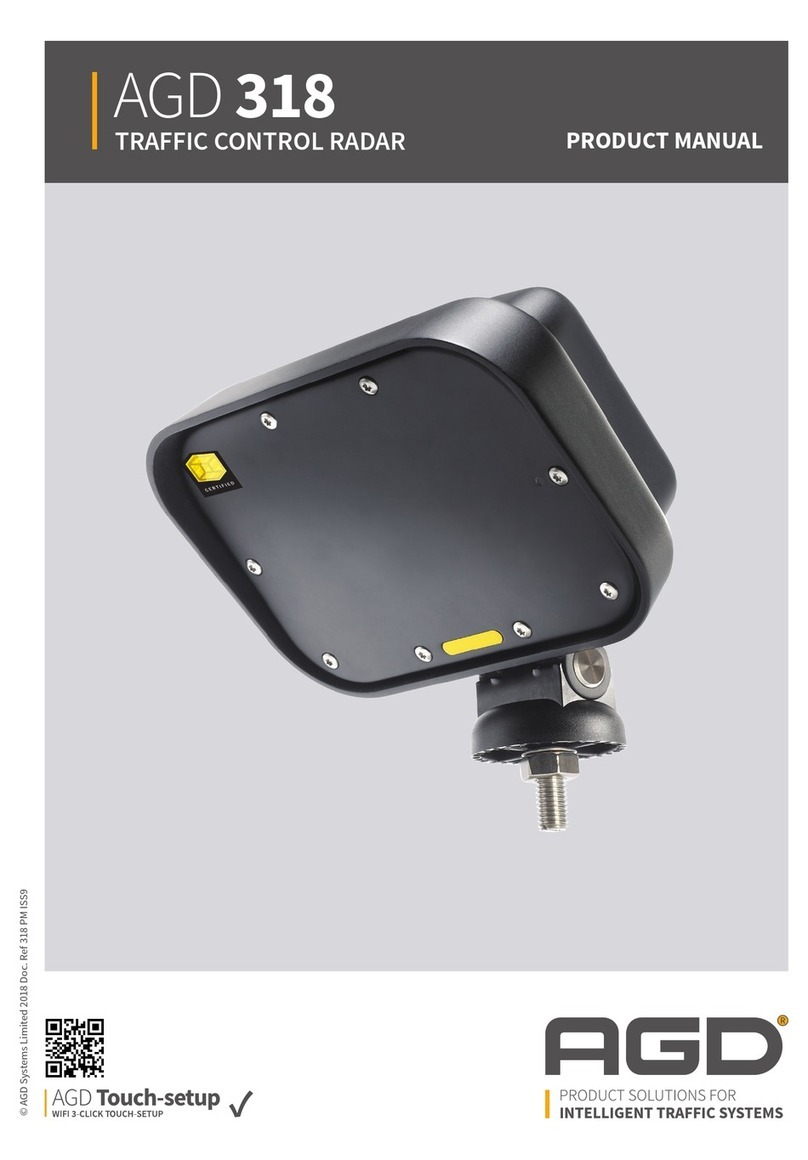Furuno FR-1908V-BB User manual

www.furuno.com
A
ll brand and product names are trademarks, registered trademarks or service marks of their respective holders.
Installation Manual
RIVER RADAR
FR-1908V-BB
SAFETY INSTRUCTIONS ................................................................................................ i
SYSTEM CONFIGURATION ........................................................................................... ii
EQUIPMENT LISTS........................................................................................................ iii
1. MOUNTING..............................................................................................................1-1
1.1 Antenna Unit ......................................................................................................................1-1
1.2 Processor Unit ...................................................................................................................1-5
1.3 Control Unit ........................................................................................................................1-7
1.4 Monitor Unit........................................................................................................................1-7
2. WIRING....................................................................................................................2-1
2.1 Antenna Unit ......................................................................................................................2-2
2.2 Processor Unit ...................................................................................................................2-6
3. ADJUSTMENTS ......................................................................................................3-1
3.1 How to Open the Protected Menus....................................................................................3-1
3.2 How to Set Alarms .............................................................................................................3-2
3.3 How to Enter Your Ship’s Characteristics ..........................................................................3-2
3.4 How to Adjust Sweep Timing .............................................................................................3-3
3.5 How to Adjust Video Level.................................................................................................3-4
3.6 Heading Alignment.............................................................................................................3-4
3.7 How to Suppress Main Bang .............................................................................................3-5
3.8 How to Set the Transmission Stop Area............................................................................3-6
3.9 How to Set the Radar Antenna Position ............................................................................3-6
3.10 How to Set the GPS Antenna Position...............................................................................3-6
3.11 How to Adjust the ROT/Rudder/Autopilot Graph (Analog Input Only) ...............................3-7
APPENDIX 1 JIS CABLE GUIDE .............................................................................AP-1
APPENDIX 2 INITIALIZE MENU TREE....................................................................AP-2
PACKING LISTS ......................................................................................................... A-1
OUTLINE DRAWINGS ................................................................................................ D-1
INTERCONNECTION DIAGRAM ................................................................................ S-1


i
SAFETY INSTRUCTIONS
Mandatory Action
Prohibitive Action
Indicates a potentially hazardous situation which, if not
avoided, could result in death or serious injury.
Indicates a potentially hazardous situation which, if not
avoided, could result in minor or moderate injury.
Warning, Caution
The installer of the equipment must read the safety instructions before attempting to
install the equipment.
Indicates a potentially hazardous situation which, if not
avoided, will result in death or serious injury.
Wear a safety belt and hard hat when working on the antenna unit.
Serious injury or death can result if someone falls from the radar
antenna mast.
WARNING
CAUTION
DANGER
DANGER
Be sure that the power supply is
compatible with the voltage rating of
the equipment.
Fire or damage to the equipment can result
if a different cable is used.
Connection of an incorrect power supply
can cause fire or damage the equipment.
Use only the specified power cable.
Do not open the equipment
unless totally familiar with
electrical circuits and
service manual.
Only qualified personnel
should work inside the
equipment.
Construct a suitable service platform
from which to install the antenna unit.
Serious injury or death can result if some-
one falls from the radar antenna mast.
Turn off the power at the mains switch-
board before beginning the installation.
Fire, electrical shock or serious injury can
result if the power is left on or is applied
while the equipment is being installed.
ELECTRICAL
SHOCK
HAZARD
Observe the following compass safe
distances to prevent deviation of a
magnetic compass:
Antenna Unit
Standard
compass
1.35 m 0.85 m
Processor Unit 0.70 m 0.40 m
Steering
compass
Control Unit
0.60 m
0.35 m
Ground the equipment to
prevent electrical shock
and mutual interference.
Do not install the monitor unit, processor
unit or control unit where they may get
wet from rain or water splash.
Water in the units can result in fire,
electrical shock, or damage the equipment.
Use a disconnecting device (ex. breaker)
to connect this equipment to the mains
switchboard.
WARNING WARNING
CAUTION

ii
SYSTEM CONFIGURATION
ANTENNA UNIT
Category of Units
Antenna Unit: Exposed to the weather
All other units: Protected from the weather
Radiator
XN20AF
XN24AF
24 VDC
Rectifier
RU-1746B-2
100/110/115/
220/230 VAC
1f, 50/60 Hz
RSB-120-102
(26 rpm)
PROCESSOR
UNIT
RPU-026
Sub Display
NMEA1 (HEADING SENSOR)
IEC61162-2
NMEA2 (AIS)
IEC61162-2
NMEA3 (NAV EQUIPMENT)
IEC61162-1
NMEA4 (Doppler)
IEC61162-1
NMEA5 (Alarm INS)
IEC61162-1
NMEA6 (ECDIS (TTM))
IEC61162-1
Control Unit
RCU-032
- ROT Sensor
(Analog/Alarm)
- Auto Pilot
(Analog/Follow-up)
- Rudder (Analog)
RW-0013
USB
DVI
RGB
24 VDC
External Monitor
(e.g. MU-190V)
External Monitor
or VDR

iii
EQUIPMENT LISTS
Standard Supply
Optional Supply
Name Type Code No. Qty Remarks
Antenna Unit XN20AF-RSB-120-102 - 12040 mm, 26 rpm
XN24AF-RSB-120-102 - 2550 mm, 26 rpm
Processor Unit RPU-026 - 1
Control Unit RCU-032 - 1
Installation Materials CP03-34401 001-194-530 1 For control unit
CP03-34501 001-194-550 1 For processor unit
CP03-33401 001-107-930 1 For antenna unit
CP03-19101 008-487-130 1 For radiator
Spare Parts SP03-17201 001-194-540 1 For processor unit
SP03-12501 008-485-360 1 For antenna unit
Name Type Code No. Qty Remarks
Rectifier RU-1746B-2 000-030-439 1
Cable Assy RNS-08-132 000-174-105 1 USB for LCD brilliance

EQUIPMENT LISTS
iv
This page is intentionally left blank.

1-1
1. MOUNTING
1.1 Antenna Unit
1.1.1 Mounting considerations
• The antenna unit is generally installed either on top of the wheelhouse or on the ra-
dar mast, on a suitable platform. Locate the antenna unit in an elevated position to
permit maximum target visibility.
• No funnel, mast or derrick should be within the vertical beamwidth of the antenna in
the bow direction, especially zero degrees ±5°, to prevent blind sectors and false
echoes on the radar picture.
• It is rarely possible to place the antenna unit where a completely clear view in all
directions is available. Thus, you should determine the angular width and relative
bearing of any shadow sectors for their influence on the radar at the first opportunity
after fitting.
• Locate the antenna of a direction finder clear of the antenna unit to prevent interfer-
ence to the direction finder. A separation of more than two meters is recommended.
• To lessen the chance of picking up electrical interference, avoid where possible
routing the signal cable near other onboard electrical equipment. Also avoid running
the cable in parallel with a power cable.
• A magnetic compass will be affected if placed too close to the antenna unit. Observe
the compass safe distances shown on page ii to prevent deviation of a magnetic
compass.
• Do not paint the radiator aperture to ensure proper emission of the radar waves.
• The antenna base is made of cast aluminum. To prevent electrolytic corrosion of the
antenna base, use the seal washers and corrosion-proof rubber mat and ground the
unit with the ground wire (supplied).
• Deposits and fumes from a funnel or other exhaust vent can adversely affect the ae-
rial performance and hot gases may distort the radiator portion. The antenna unit
must not be mounted where the temperature is more than 55°C.
• Leave sufficient space around the unit for maintenance and servicing. See the an-
tenna unit outline drawing for recommended maintenance space.
Do not apply paint, anti-corrosive
sealant or contact spray to coating or
plastic parts of the equipment.
Those items contain organic solvents that
can damage coating and plastic parts,
especially plastic connectors.
NOTICE

1. MOUNTING
1-2
1.1.2 How to assemble the antenna unit
The antenna unit consists of the antenna radiator and the antenna unit chassis, and
they are packed separately. Fasten the antenna radiator to the antenna unit chassis
as below:
1. Attach two guide pins to the underside of the antenna radiator.
2. Remove a waveguide cap from the radiator bracket. The cap may be discarded.
3. Coat the waveguide flange with anticorrosive adheasive as shown below.
4. Coat fixing holes for the antenna radiator with anticorrosive adheasive.
5. Grease the O-ring and set it to the O-ring groove of the radiator flange.
6. Set the antenna radiator to the radiator bracket.
7. Coat hex bolts M8x40 with anticorrosive adheasive and use them to loosely fasten
the antenna radiator to the antenna unit chassis.
8. Remove two guide pins (inserted at step 1), and then tighten fixing bolts.
Hole for a
guide pin
5 mm Anticorrosive adheasive
Hole for a
guide pin
Waveguide cap
O-ring
10 mm
Be sure to remove the guide pins.
Injury may result if the guide pins loosen
and fall.
CAUTION
Antenna radiator
Waveguide
Radiator bracket
Hex bolt
(M8x40, 8 pcs.)
O-ring
Guide pin

1. MOUNTING
1-3
1.1.3 How to fasten the antenna unit to the mounting platform
The antenna unit may be assembled before hoisting it to the mounting platform. How-
ever, do not lift the antenna unit by the radiator. Always hold the unit by its housing.
When using a crane or hoist, use the hoist rings which should be fastened to the bolt
fixing covers of the antenna housing.
1. Construct a suitable mounting platform referring to the outline drawing at the end
of this manual.
2. Drill four mounting holes of 15 mm diameter and one cable entry hole of about 50
mm diameter in the mounting platform.
3. Lay the rubber mat (supplied) on the mounting platform.
4. Place the antenna unit on the rubber mat, orienting the unit so the bow mark on
its base faces the ship’s bow.
-To hoist antenna unit aboard vessel, attach ropes to lifting fixtures and
hoist unit with crane.
- To remove load from radiator when hoisting, the length of the rope
between the radiator base and the hook on the should be at least 130 cm.
- To keep the rope away from the radiator, turn the radiator and chassis
approx. 30 degrees as shown below.
- Be sure to remove the lifting fixtures after hoisting is completed.
130 cm
Hook
Lifting fixture
Approx.
30 deg.
Approx.
30 deg.
Lifting fixture
(Top view)
Hoist
rings
Hoist
rings
NO!
NOTICE
Ground
terminal
Rubber
mat
Bow mark

1. MOUNTING
1-4
5. Fasten the antenna unit to the mounting platform with M12x60 hex. bolts, nuts, flat
washers and seal washers.
6. Use hex. bolt (M6x25), nut (M6) and flat washers (M6) to establish the ground sys-
tem on the mounting platform as shown below. The location should be within 340
mm of the ground terminal on the antenna unit. Connect the ground wire
(RW-4747, 340 mm, supplied) between the grounding point and the ground termi-
nal on the antenna unit. Coat the entire ground system with adhesive (supplied).
7. Confirm that the hoist rings are removed.
The ground point must be within 300 mm from the ground termninal on
the antenna unit.
Coat with marine adheasive.
Antenna unit fixing bolt
(Sectional view)
or
Seal washer
Rubber mat
Mounting Platform
Anticorrosive adheasive
Flat washer
Spring washer
Hex. nut (Torque:
49 N•m
)
Antenna chassis
Ground wire
Anticorrosive adheasive
Ground wire
Anticorrosive
adheasive
Hex. bolt
Flat washer
Flat washer
Spring washer
Hex. nut
Mounting Platform
Flat washer
Hex. nut
Mounting Platform
Ground wire Hex. nut
Spring washer
Hex. bolt welded to ship’s superstructure

1. MOUNTING
1-5
1.2 Processor Unit
1.2.1 Mounting consideration
The processor unit can be mounted on a desktop or bulkhead. When selecting a
mounting location, be careful about the following points:
• Locate the unit out of direct sunlight and away from heat sources because of heat
that can build up inside the cabinet.
• Locate the equipment away from places subject to water splash and rain.
• Select a mounting location considering the length of the cables connected.
• Leave sufficient space on the sides and rear of the unit to facilitate maintenance.
(See the outline drawing at the back of this manual.)
• A magnetic compass will be affected if placed too close to the processor unit. Ob-
serve the compass safe distances shown on page ii to prevent deviation of a mag-
netic compass.
1.2.2 How to mount the processor unit
Desktop installation
Fasten the unit with four bolts (M5, supplied) or self-tapping screws (5x20).

1. MOUNTING
1-6
Bulkhead installation
Note: The cable entry side should be downward when the processor unit is mounted
on the bulkhead.
1. Mark location for four self-tapping screws if screws will be used.
2. Insert four bolts (M5, supplied) or self-tapping screws (5x20), leaving approx. 5
mm of the bolts (screws) exposed.
3. Hang the processor unit on the four bolts (screws) inserted at step 2.
4. Tighten all bolts (screws).
Cable entry side

1. MOUNTING
1-7
1.3 Control Unit
The control unit can be installed on a desktop. The control unit should be mounted
within five meters from the processor unit since the length of the cable connecting
them is five meters.
1. Drill four mounting holes of 5 mm diameter referring to the outline drawing at the
back of this manual.
2. Fix the control unit with four self-tapping screws (φ4) from the top of the control
unit. The M4 screws with a sufficient length for the thickness of the tabletop should
be provided locally.
3. Attach four cosmetic caps to the fixing holes on the control unit.
1.4 Monitor Unit
The system is designed with the MU-190V (local supply) in mind. The output video sig-
nal is in portrait format. For configurations with monitors other than the MU-190V, con-
sider the following points at installation:
• For monitors other than the MU-190V, brightness cannot be adjusted from the menu
or the control unit. Adjust brightness at the monitor itself.
• The output video signal from the FR-1908V-BB cannot be flipped upside-down. For
this reason, when installing a landscape monitor select a location that allows the
monitor to be installed after rotating the monitor 90 degrees clockwise.
• When using a landscape monitor which has been rotated, the viewing orientation
angles change. This can cause the colors of echoes, etc to change, depending on
the viewing angle.
Fixing hole

1. MOUNTING
1-8
This page is intentionally left blank.

2-1
2. WIRING
XN20AF
XN24AF
Monitor unit
(e.g. MU-190V)
Monitor unit
(e.g. MU-190V)
24 VDC
Control
Unit
5m
RGB
IEC 61162
IEC 61162
IEC 61162
USB mouse
- ROT 20mV/deg
- Autopilot 20mV/deg
- Rudder 1-100mV/deg
- Pilot function
- ROT alarm
DVI cable
115/230 VAC
Rectifier
Processor unit
RPU-026
USB cable
24 VDC 24 VDC
- Satellite compass
- Inland AIS
- Echo sounder
- Compass
- Autopilot
- GPS
- Wind sensor
- ROT, rudder
RSB-120-102
(26 rpm)
ANTENNA UNIT

2. WIRING
2-2
2.1 Antenna Unit
1. Open the antenna cover.
2. Disconnect plugs P821, P822, P801 and P802.
3. Unfasten the transceiver module (two bolts). Remove the transceiver module.
4. Unfasten four fixing bolts on the cable gland at the base of the antenna unit. Re-
move clamping ring, rubber gasket and washers.
5. Pass the signal cable through the cable entry hole in the antenna unit mounting
platform. Trim the cable to 800 mm length from the cable gland.
6. Slide two washers, rubber gasket, washer and clamping ring onto the cable in that
order.
7. Fabricate the signal cable as shown in below.
1) Remove the vinyl sheath for a length by 460 mm.
Transceiver module
(magnetron inside)
Height more
than 5 cm
Non-ferrous
block
The magnetron in the transceiver module will demagnetize
if it contacts ferrous material. When dismounting the
transceiver module, lay it on its side or on top of
non-ferrous material as shown below.
CAUTION
J801 and J802
on 03P9506 Board
J822 on
03P9487 Board
Ground terminal
J821
Flat washer
Gasket
Clamping ring

2. WIRING
2-3
2) Unravel the outer shield to expose the cores in the outer layer. Then, expose
the cores in the inner layer. Label all inner cores to aid in identification.
3) Trim each core (except coaxial wire) considering its location on the terminal
board.
4) Trim the inner and outer shields leaving 510 mm each. Twist shields together
and attach crimp-on lug FV5.5-4 (yellow, φ4.)
5) Remove insulation of each core approx. 8 mm.
8. Fabricate the coaxial cable.
9. Pass the shield between the clamping ring and the washer as shown below.
Fasten the clamping ring with the screws.
Core
Fold back.
Coaxial cable
Inner/outer shield
8
460460
Vinyl sheath Outer shield
Expose the wires then twist shield.
Attach crimp-on lug to shield.
Fold back.
Coaxial
cable
Core
14 56
Clamping ring
Washer
Rubber gasket
4-M4x16
Shield

2. WIRING
2-4
10. Connect the signal cable to the terminal board TB801, TB802 and TB803 on the
03P9488 board, referring to the interconnection diagram.
11. Pass the coaxial cable under the transceiver fixing plate (arrow) and the clamp
(dashed circle).
How to connect wires to WAGO connector
Press downward.
Terminal
opener
WAGO
connector
Wire
Twist
Procedure
1. Twist the core.
2. Set terminal opener and press it downward.
3. Insert the core into hole.
4. Remove the terminal opener.
5. Pull the wire to confirm that it is secure.
Terminal opener
03P9488 board
TB803
(High-Voltage line)
TB802
(WAGO connector)
Cable clamp
Motor
TB801
(WAGO connector)
Cable clamp
Core
entrance
Core
entrance
How to insert the core
1. Push white lever.
2. Insert a core.
3. Release white lever.

2. WIRING
2-5
12. Detach the junction box from the transceiver unit.
13. Loosen the two screws on the junction box, then slide the cover to open the box.
Connect the coaxial cable as shown below.
14. Close the junction box and tighten the screws. Reattach the box to the transceiver
unit.
15. Reconnect the plugs disconnected at step 2.
16. Set the transceiver module to the antenna unit and push the module in until it
stops. Tighten the fixing bolts. Be sure to push in the transceiver unit until it
stops. Failure to do so may cause microwave leakage.
17. Fasten the shield wire to the wing nut on the transceiver module.
18. Confirm that all screws are tightened and all wiring is properly made. Confirm that
the waterproofing gasket, bolts and tapping holes of the antenna unit are coated
with silicone grease.
19. Close the antenna unit cover.
Junction box
Transceiver unit
Fixing
screw
Core-fixing screw
Shield-fixing clamp
Coaxial cable
entrance
Position shield beneath clamp.
Fasten core.

2. WIRING
2-6
2.2 Processor Unit
How to fabricate the power cable
1. Remove the armor of the cable and the vinyl sheath by 60 mm.
2. Remove the vinyl sheath 40 mm.
3. Remove the insulation of the cores 10 mm. Fix crimp-on lugs (FV5.5-4, yellow,
supplied) to the cores.
4. Peel the paint of the armor 40 mm for to make ground connection.
5. Cover the end of the armor with vinyl tape. Lay the section where paint was peeled
on the cable clamp on the cable entry side of the processor unit. Fasten the cable
clamp.
6. Fasten the crimp-on lugs to the terminal block.
DVI-D and USB cable
(5 m, to Monitor Unit)
RGB cable (option)
(to external monitor)
TTYCSLA, antenna, control
unit and RW-4864 cables
(For clamping positions,
see the sticker on the
reverse side of the top
cover.)
LAN cable
(to other radar or HUB switch)
Ship’s power
(DPYC-6, local supply)
Ground terminal
(IV-8sq., local supply)
Armor
Vinyl tape
DPYC-6䠄DC䠅
60 mm
10
Peel paint (40 mm)
40
Other manuals for FR-1908V-BB
1
Table of contents
Other Furuno Radar manuals
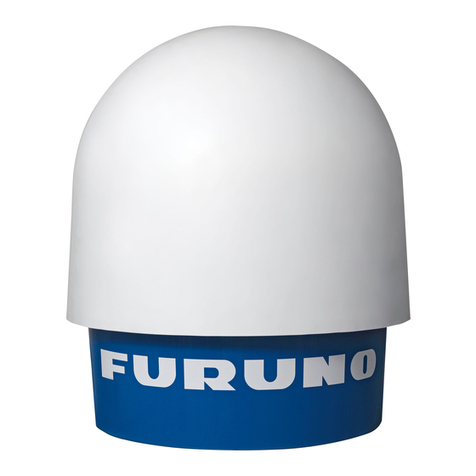
Furuno
Furuno WR110 User manual
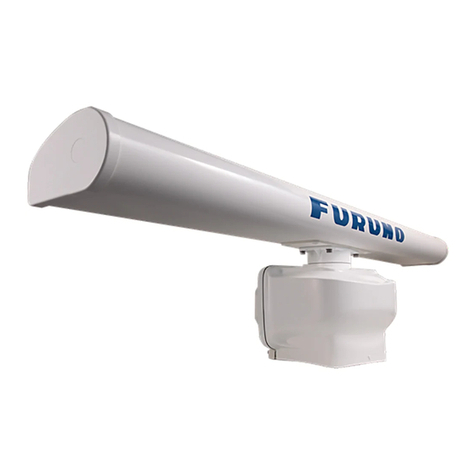
Furuno
Furuno DRS12AX X-Class User manual

Furuno
Furuno FAR-3230S-BB User manual
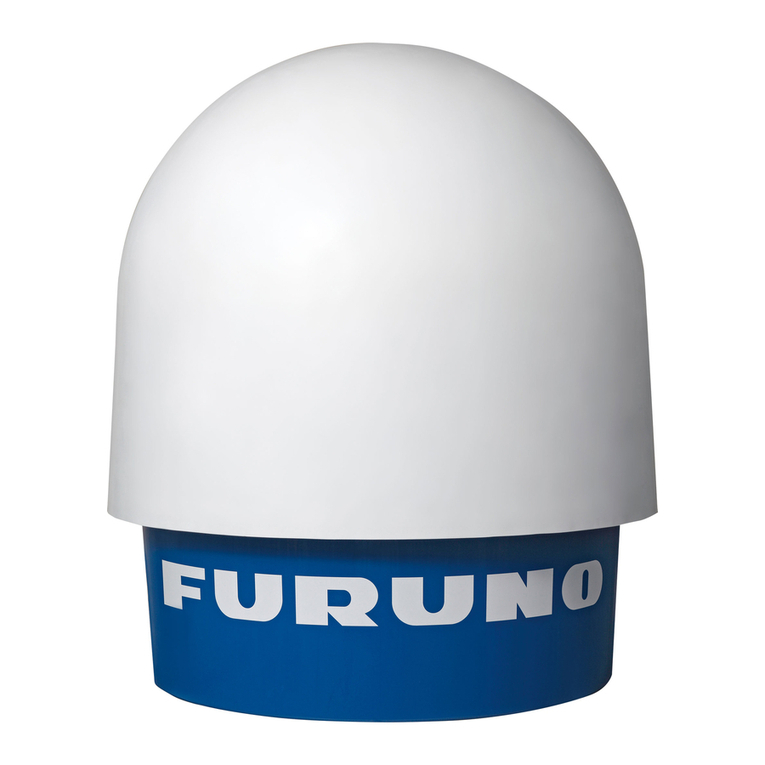
Furuno
Furuno WR2120 User manual
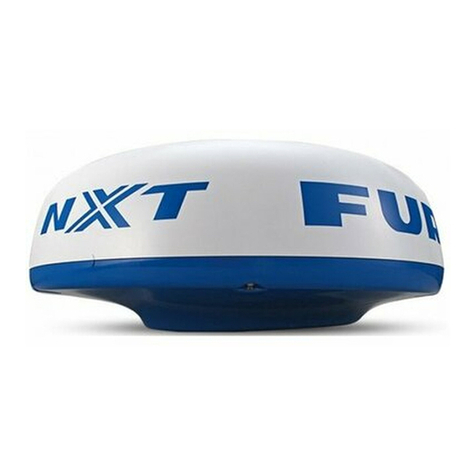
Furuno
Furuno DRS4D-NXT User manual

Furuno
Furuno FR-1500 User manual
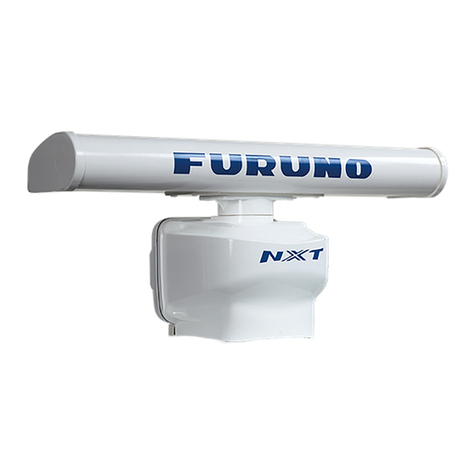
Furuno
Furuno DRS6A-NXT User manual

Furuno
Furuno WR110 User manual
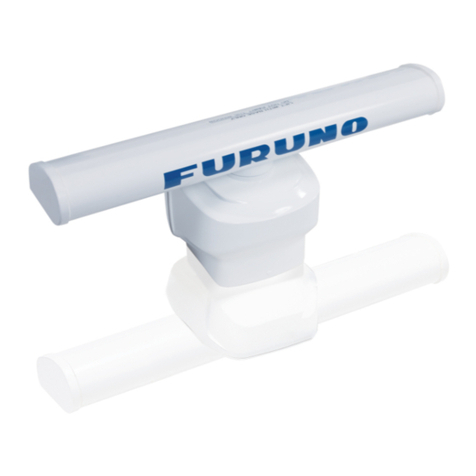
Furuno
Furuno DRS6A X-Class User manual
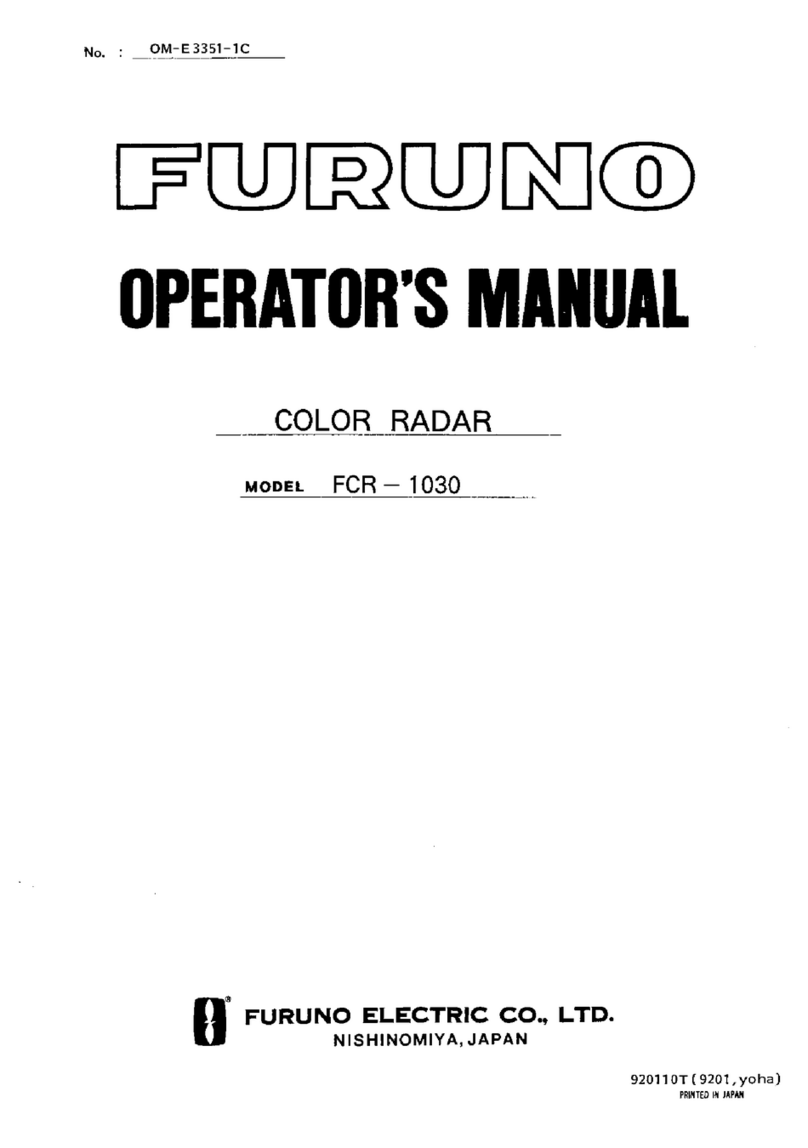
Furuno
Furuno FCR-1030 User manual

Furuno
Furuno FAR-3210 User manual

Furuno
Furuno WR-2100 User manual
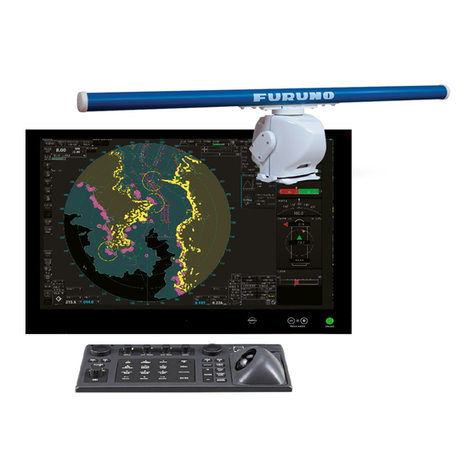
Furuno
Furuno FAR-3210 Manual

Furuno
Furuno DRS4A User manual

Furuno
Furuno WR-2100 User manual

Furuno
Furuno FR-2105 User manual

Furuno
Furuno FAR-3210 User manual
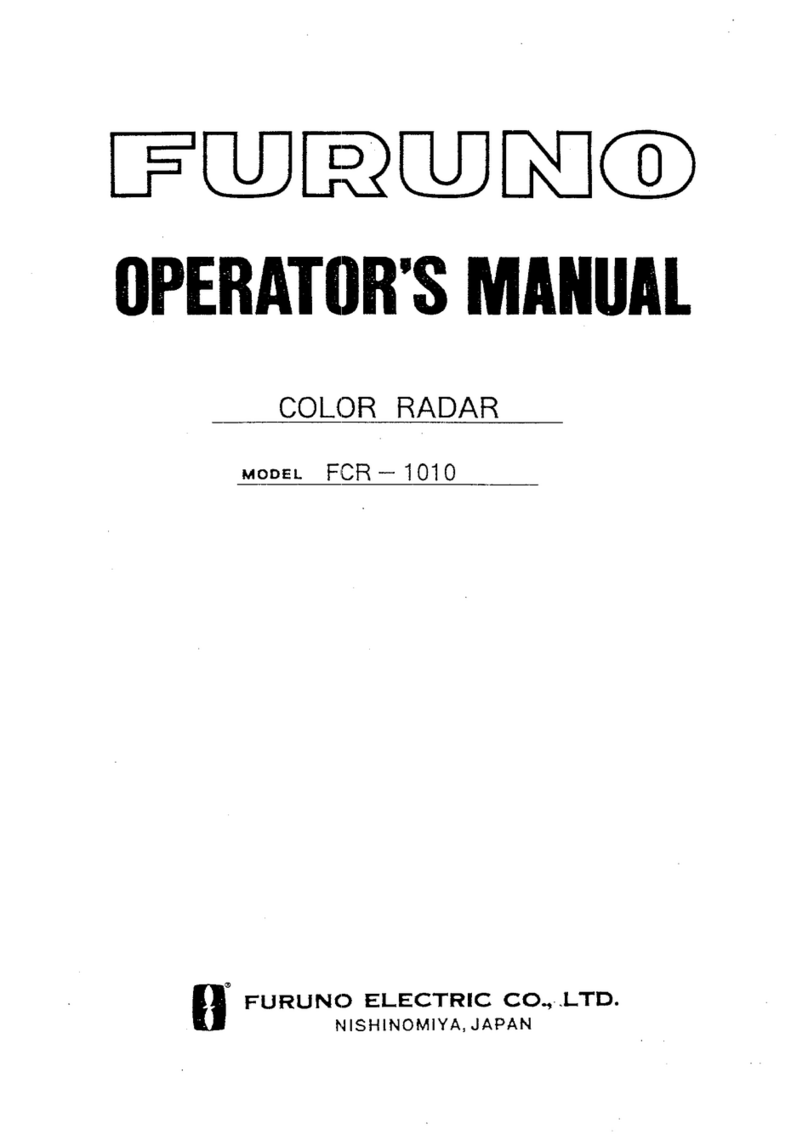
Furuno
Furuno FCR-1010 User manual
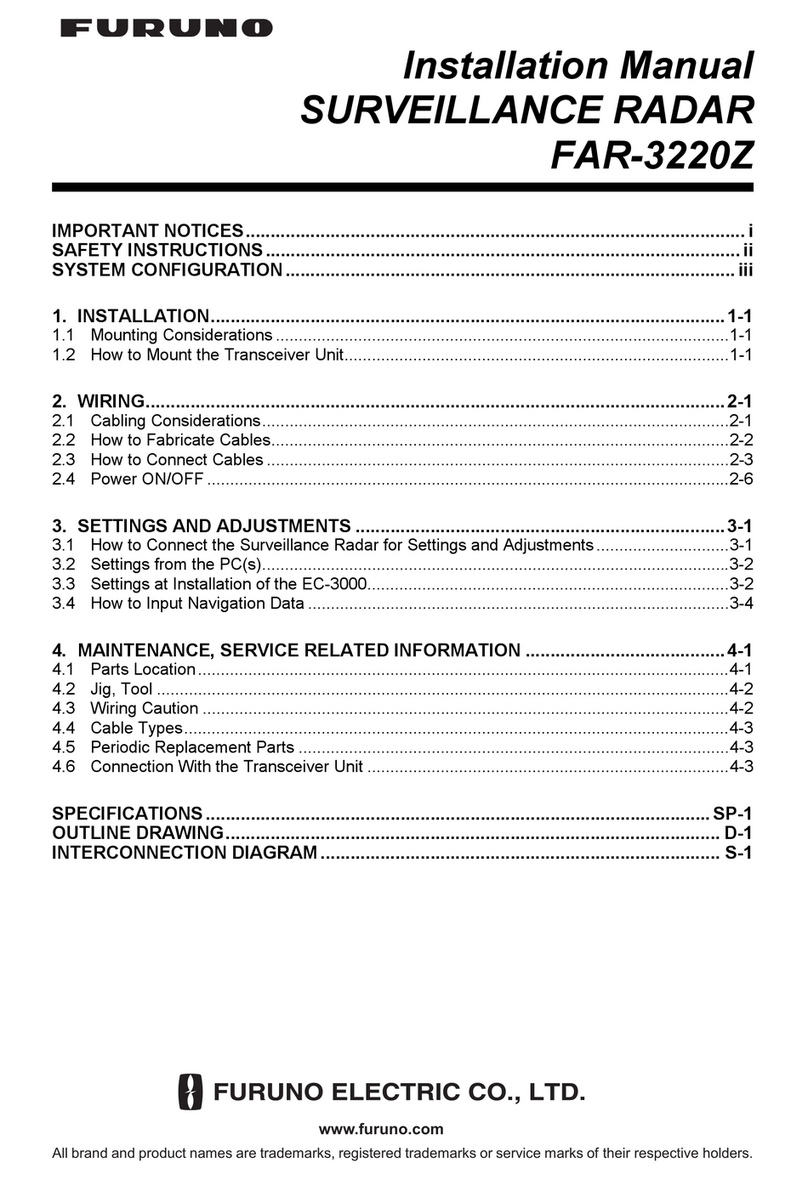
Furuno
Furuno FAR-3220Z User manual

Furuno
Furuno FAR2137S/12 User manual
